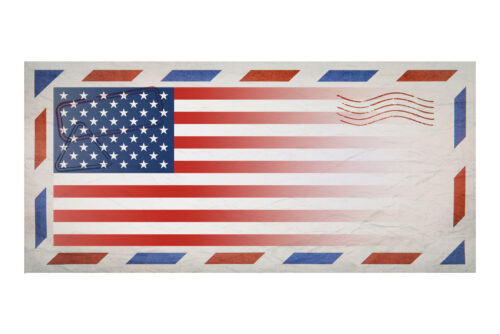Truly persuasive messaging relies on alignment between writing and design. AmPhil’s new Creative Studio brings the two under one roof and onto the same page.
Did you know that serial killers have all but vanished from America in the past few decades?
It’s true. You don’t hear about new Ted Bundys or John Wayne Gacys today because that genre of sociopath apparently no longer exists.
There are any number of theories why . . . but here’s one big reason why serial killers used to run amok: police departments didn’t communicate. No universal fingerprinting database. No system of sharing reports or insights. Oftentimes a sheriff in one county would have no clue that similar murders were occurring just 50 miles down the road.
If everyone in a given system operates independently, blithely unaware of their compatriots’ actions, you can get away with murder(s). But when departments collaborate and share information and insights, malfeasance (and dysfunction) is nipped in the bud.
Does the 1970s situation sound like your organization or messaging? Not in terms of body count, of course . . . but it’s an incontrovertible fact that compartmentalization and lack of coordinated communication can cause all sorts of problems.
If you’re part of an organization with even two employees you’ve probably encountered this phenomenon. Variations on it happen all the time in fundraising. Marketing and comms are saying one thing . . . donor relations something completely different . . . and neither knows what the other is up to. Fortunately, lives are not at stake (usually). But mistakes and miscommunication matter: they hurt the credibility, coherency, and cogency of your message.
It’s hard to build or execute when the left hand doesn’t know what the right hand is doing. Or when different messages are coming out of the two sides of your mouth. The potential for miscommunications and inefficiencies abounds.
It’s a daunting problem, and AmPhil has a deceptively simple solution: the new Creative Studio. It brings an organization’s communications needs under one roof—from the print and digital materials needed to woo donors, to landing pages, pitch decks, op-eds, and more. In the Creative Studio, AmPhil’s writing and design teams work closely together (. . . unlike local sheriffs in Ted Bundy’s day . . .) to capture and amplify your voice and style in a single document or across different platforms.
In our screen-saturated, time-scarce world, truly persuasive messaging resides at the intersection of writing and design. Your language must be clear and compelling—but it also needs to look great. If writing and design stay sequestered, if the twain never meet, communications come across as disjointed. The finished product is unlikely to convince donors to align themselves with you.
A dearth of communication between departments is a recipe for mixed messages and miscommunications. As I said, the solution is deceptively simple, but it’s also surprisingly effective: get your right (write?) hand talking to your left, then step back and watch your cohesive, coherent communications win your donors over.






